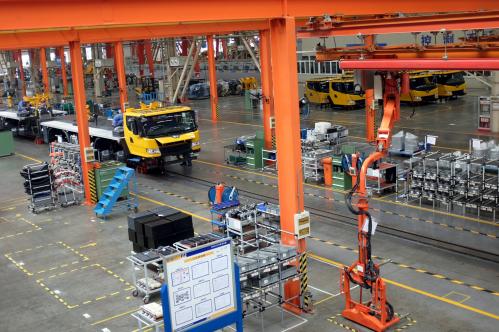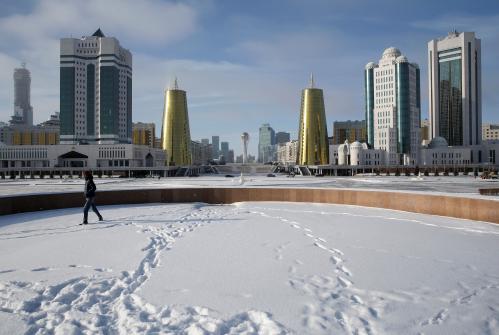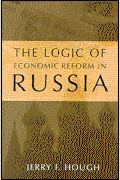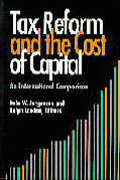Uzbekistan’s economic transition from plan to market started three decades ago when it became an independent country. But for much of this time, economic modernization proceeded at a snail’s pace. In late 2016, Uzbekistan surprised everyone. It started structural reforms—how it managed macroeconomic policy, how it regulated enterprise, and how it provided public services—with a breadth and speed that exceeded even what we had observed in some of the earlier reformers like Kazakhstan at a similar stage of the process. In 2019, The Economist declared Uzbekistan the most improved economy—the country of the year.
Where is Uzbekistan today? How far has it come over the last four years and what’s ahead? These questions about Uzbekistan’s transition are answered in a new World Bank Country Economic Memorandum.
Starting with weaknesses
The Uzbek government started by focusing on the main vulnerabilities of the economic model that had guided their development strategy. The state had planned and led the distribution of resources and outputs among state-owned enterprises (SOEs). Apart from exports of commodities such as gold that connected the country with global markets, the economy was closed. The model and mindset were inward-looking, with little reliance on competition in markets and, consequently, little economic and social dynamism. The past development model was dominated by heavy industry, abundant use of natural resources and physical capital, and a neglectful attitude toward the employment and development of human capital. Jobs were scarce. Resources were misallocated. Labor mobility was restricted.
Under the old model, the government rationed basic services to all, without linking budget outlays to results, paying little heed to efficiency, accountability, and productivity. In other words, the government was too present in some areas, too little involved in others, but its role throughout the economy lacked adequate effectiveness, efficiency, and support for inclusive and sustained growth.
In late 2016, newly elected President Mirziyoyev began an ambitious economic modernization program to reinvigorate economic growth. This was followed by the November 2018 Reform Roadmap which outlined the government’s economic reform priorities for 2019-2021. The roadmap contains five major pillars: (i) maintain macroeconomic stability; (ii) accelerate the market transition; (iii) strengthen social protection and citizen services; (iv) align the government’s role with the needs of a market economy; and (v) preserve environmental sustainability. The reform priorities within each pillar draw on lessons learned from the market transitions of other countries but are also firmly based in Uzbekistan’s unique context.
Similar sequencing
Where is Uzbekistan today in its transition from plan to market? The sequencing of reforms has been similar to the first reformers in Eastern Europe and East Asia. The government proceeded most resolutely with liberalizing prices and foreign trade and unifying the exchange rate. It has taken more time to reorganize the structure of government finances and revamp the government’s role in the economy. Public spending has changed through the reorientation of capital expenditures toward priority areas for reform and a large increase in social sector—education, health, and government assistance—outlays. The tax system has been simplified and made more neutral through a complete overhaul of tax policy and improved tax administration. Fiscal and debt transparency has substantially improved. The changes in fiscal policy and the structure of government finances have supported the transformation of the economic model and have laid the groundwork for future economic expansion.
Progress with enterprise restructuring, privatization, and introducing a supportive investment framework for new private firms has been a lot slower. Private enterprises have started to spring up and become a bit bigger, but private entrepreneurship is still constrained. Firm entry lags regional comparators and after entry, enterprises are struggling to grow. Similarly, the restructuring of the financial sector and bank privatization have been sluggish. Weak corporate governance, lingering directed lending, and capacity gaps faced by the banking supervisor are the key areas for reforms.
Shifting to more effective delivery of education and health has progressed least rapidly. According to the World Bank’s Human Capital Index, a child born in Uzbekistan today will be only 62 percent as productive when she grows up as she would be if she had complete education and full health. Uzbekistan has a favorable demographic structure: The median age is just 28, and two-thirds of the population is between 15 and 64 years old. But without empowering the younger generation through investing in their education and health, a sustained economic transformation will be hard to engineer.
Mixed outcomes
This outcome—its sequencing if not its pace—is not surprising. Countries in both Eastern Europe and East Asia have had similar experiences. Changes that require more fundamental restructuring and deeper rethinking of the role of the government take longer. What may be more worrying is that in Uzbekistan the speed and breadth of reforms have sometimes been emphasized more than their depth and their careful implementation. As a result, Uzbekistan’s performance has been mixed.
Reforms depend on experience with markets and prices, initial conditions, and institutional strength. In countries such as Estonia, Poland, and Russia, the first year of transition was dedicated to market liberalization, small privatization, the building of essential market institutions, and controls of medium/large SOEs to forestall asset stripping. During the second and third years, the authorities further developed market institutions and started medium/large privatization. During the fourth year, large and medium privatization continued, and best practices of corporate governance were introduced for the remaining SOEs. Based on this timeline, Uzbekistan’s transition proceeded in line with comparators in terms of market and trade liberalization, small privatization, and the building of essential market institutions. By contrast, large and medium privatization of both SOEs and the state-owned commercial banks is just gearing up, four years after the transition began.
Uzbekistan’s efforts have delivered some of the results that were expected, but they’re definitely raising expectations a lot more. Impressively, the reform momentum has not slowed during the coronavirus disruptions. The next stage of market and institutional reforms is aiming to increase the efficiency of labor, capital, land, and resource markets. It should be starting soon.
The Brookings Institution is committed to quality, independence, and impact.
We are supported by a diverse array of funders. In line with our values and policies, each Brookings publication represents the sole views of its author(s).









Commentary
High expectations in Uzbekistan
February 8, 2022